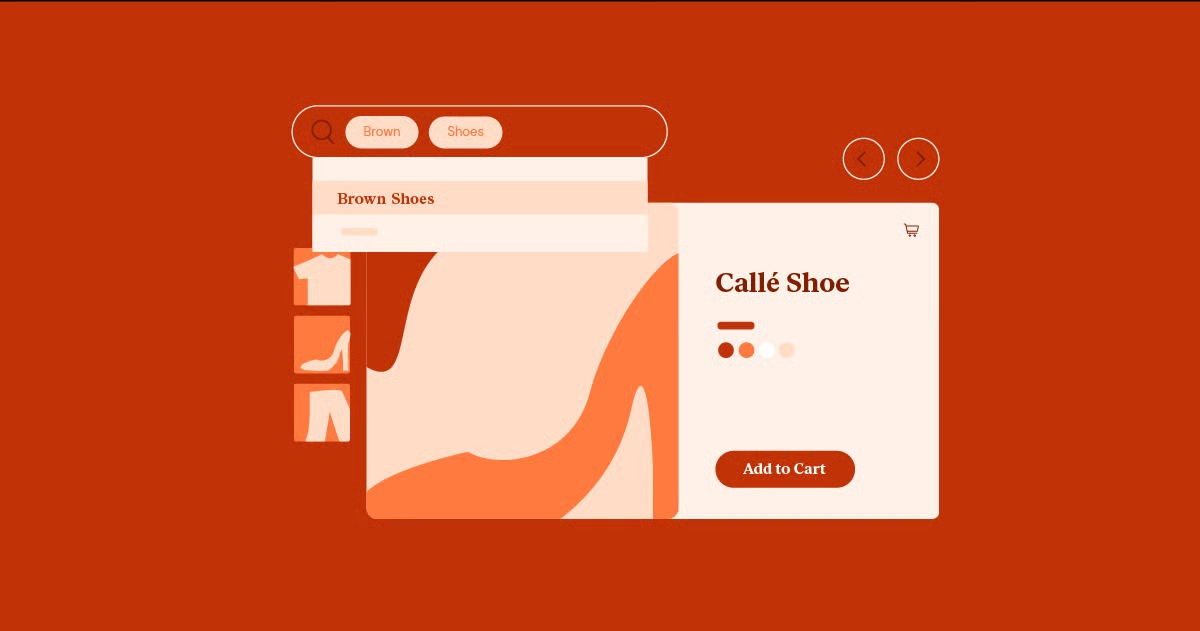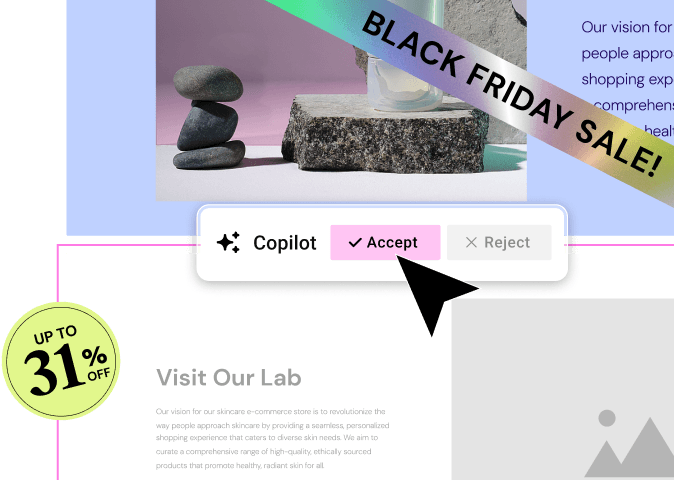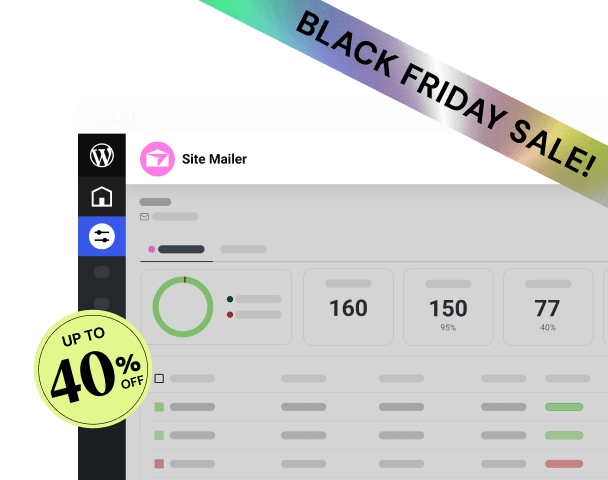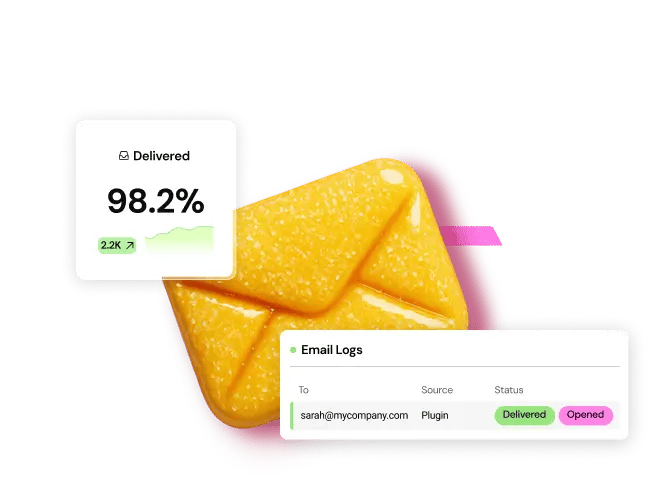Table of Contents
We’ll break down every factor that influences pricing, from the type of domain you choose to the registrar you buy it from. You will learn about registration fees, renewal rates, hidden costs, and the lucrative world of premium domains. By the end, you’ll have the knowledge to make an informed decision and find the perfect domain for your project without overpaying.
Key Takeaways
- Standard Domain Costs: For a typical .com, .net, or .org domain, expect to pay between $10 to $20 per year for the initial registration. Prices can vary significantly between different registrars and are often discounted for the first year.
- Renewal Rates Are Higher: The promotional price you pay for the first year is almost always lower than the renewal price. Always check the registrar’s renewal fee, which can be 50-100% higher than the introductory offer.
- TLD Matters: The Top-Level Domain (TLD), or the extension at the end of your domain (.com, .ai, .store), is a primary driver of cost. While .com is the standard, newer TLDs like .io or .tech can have different and often higher price points.
- Premium Domains Are an Investment: Some domain names are considered “premium” because they are short, memorable, and use popular keywords. These are sold on the aftermarket and can cost anywhere from hundreds to millions of dollars.
- Hidden Costs Exist: Be aware of common upsells during the checkout process. These include WHOIS privacy (which should ideally be free), email hosting, SSL certificates, and website builders. Some are necessary, but you can often find better deals elsewhere.
- You Can Get a Domain for Free: Many web hosting providers, including Elementor Hosting, offer a free domain name for the first year when you purchase a hosting plan. This is an excellent way for new website owners to reduce initial setup costs.
Understanding the Anatomy of a Domain Name
Before we dive into the costs, let’s quickly break down what a domain name is. Think of it like a street address for your house, but for your website on the internet. Instead of a complex string of numbers (an IP address like 192.168.1.1), a domain name is a human-friendly label that’s easy to remember.
A domain name consists of two main parts:
- Second-Level Domain (SLD): This is the unique part of your domain that you choose. In elementor.com, “elementor” is the SLD. It’s the core of your brand identity.
- Top-Level Domain (TLD): This is the extension that follows the SLD. In elementor.com, “.com” is the TLD. It helps categorize the website’s purpose or geographical location.
The combination of your unique SLD and a TLD creates the full domain name that people will type into their browsers to find you. The choice of TLD is one of the most significant factors that will influence the cost.
The Core Factors Influencing Domain Name Costs
Domain pricing isn’t arbitrary. Several key factors work together to determine the final price you’ll pay. Understanding these will help you navigate the purchasing process and identify the best value for your needs.
1. The Top-Level Domain (TLD) Extension
The TLD is the single biggest factor affecting the price of a new domain. For decades, a few familiar TLDs dominated the web, but today there are over a thousand options.
Generic Top-Level Domains (gTLDs)
These are the most common and recognizable TLDs. They were originally intended for specific purposes, but those distinctions have largely disappeared.
- .com: Originally for “commercial” sites, it’s now the de facto standard for businesses and individuals worldwide. It’s the most sought-after and trusted TLD, which also makes it the most competitive. A new, unregistered .com domain typically costs $10 to $20 per year.
- .net: Intended for “network” infrastructures, it’s often seen as the second-best option after .com. It’s priced similarly to .com, usually in the $12 to $20 per year range.
- .org: Created for “organizations,” particularly non-profits. It carries a sense of trust and authority. The cost is generally $10 to $18 per year.
- .info: For informational websites. It’s usually one of the cheapest options, often available for just a few dollars for the first year.
- .biz: Intended for businesses, but it never gained the same level of trust as .com. It’s often priced low initially but can have higher renewal rates.
Country-Code Top-Level Domains (ccTLDs)
These domains are tied to specific countries or territories. Examples include .us (United States), .ca (Canada), .de (Germany), and .io (British Indian Ocean Territory, but popular in the tech industry).
The pricing for ccTLDs varies wildly. Some are very cheap, while others are expensive and may have residency requirements. For example, a .us domain might cost around $8 per year, while a .ch (Switzerland) domain could be closer to $15 per year. Some, like .tv (Tuvalu), have become popular for specific industries (video/media) and are priced higher, often $30 per year or more.
New Top-Level Domains (nTLDs)
In recent years, hundreds of new TLDs have been introduced, creating a new world of branding opportunities. These are often industry-specific and can be highly descriptive.
Examples include:
- .app
- .shop
- .tech
- .store
- .design
- .blog
The prices for these nTLDs are set by their respective registries and can range from $5 to over $100 per year. For example, a .store domain might have a promotional price of $5 for the first year but renew at $50. A .tech domain could cost around $50 per year from the start. These TLDs offer a great way to get a relevant, keyword-rich domain when the .com version is taken.
2. The Domain Registrar
A domain registrar is a company accredited by ICANN (Internet Corporation for Assigned Names and Numbers) to sell domain names to the public. Where you buy your domain from matters, as pricing, features, and user experience can differ significantly.
Here are some of the most popular registrars:
- GoDaddy: One of the largest and most well-known registrars. They often have aggressive introductory pricing but are known for higher renewal rates and numerous upsells during checkout.
- Namecheap: A popular choice known for competitive and transparent pricing. They include free WHOIS privacy with every domain, which is a significant plus.
- Google Domains: Offers a clean, no-fuss interface with straightforward pricing. Free privacy protection is included, and their renewal rates are transparent and competitive.
- Bluehost: Primarily a hosting company, but they are also a major domain registrar. They famously offer a free domain for the first year with their hosting plans.
- Elementor: While not a standalone registrar, Elementor offers an all-in-one solution with its managed WordPress hosting plans. When you sign up for Elementor Hosting, you get a free domain name for the first year, along with the Elementor Pro plugin, making it an incredibly cost-effective package for anyone looking to build a professional website.
“Choosing an all-in-one platform like Elementor Hosting simplifies the entire process,” notes web creation expert Itamar Haim. “You get your hosting, domain, and the industry-leading website builder under one roof with a single point of support. For both beginners and professionals, this integrated approach saves time and prevents the technical headaches that can arise from dealing with multiple vendors.”
When comparing registrars, don’t just look at the first-year price. Always check the renewal rate. A domain that costs $1.99 for the first year might renew at $22.99, making it more expensive in the long run than a domain that costs $12.99 upfront and renews at the same price.
3. Registration Duration
Most registrars offer discounts if you register a domain for multiple years at once. While a single-year registration for a .com might be $15, a five-year registration could bring the average annual cost down to $12 or $13.
Registering for a longer term has a few advantages:
- Cost Savings: You lock in the current price for a longer period, protecting you from future price increases.
- Convenience: You don’t have to worry about renewing your domain every year and risking accidental expiration.
- Potential SEO Boost: Some SEO experts believe that search engines may view a long-term registration as a signal of a more legitimate, long-term project, although this is a minor ranking factor at best.
However, be sure you’re committed to the domain name before registering it for a decade. Once registered, you generally cannot get a refund if you change your mind.
4. WHOIS Privacy Protection
When you register a domain, your personal information (name, address, email, phone number) is added to a public database called WHOIS. This is a requirement from ICANN. Without privacy protection, this information is visible to anyone, which can lead to a flood of spam emails and unwanted phone calls.
WHOIS privacy protection (sometimes called Domain Privacy) is a service offered by registrars that replaces your personal information with their own generic contact details in the public database. This shields you from spammers and protects your privacy.
The cost of this service varies:
- Some registrars offer it for free: Companies like Namecheap, Google Domains, and hosting providers like Elementor include privacy protection as a standard feature. This is the ideal scenario.
- Some registrars charge for it: Others, like GoDaddy, often charge an annual fee for this service, typically ranging from $10 to $15 per year.
This is a crucial feature, and the cost should be factored into your total domain expense. A $10 domain with a $15 privacy fee is more expensive than a $12 domain with free privacy.
First-Year Promotional Pricing vs. Renewal Costs
This is one of the most important concepts to understand to avoid surprise expenses. The domain industry is highly competitive, and registrars use low introductory prices to attract new customers. You might see ads for “$.99 .com domains” or “80% off your first year.”
These deals are legitimate, but they only apply to the initial registration period, which is usually one year. After that first year, you will have to renew the domain at the regular, non-promotional rate. This renewal rate is often significantly higher.
Let’s look at a typical example:
- First-Year Cost: $2.99
- Renewal Cost: $21.99 per year
Over five years, your total cost for this domain would be $2.99 + ($21.99 * 4) = $90.95.
Now, consider a registrar with a higher upfront cost but a lower renewal rate:
- First-Year Cost: $13.99
- Renewal Cost: $13.99 per year
Over five years, the total cost would be $13.99 * 5 = $69.95. In this case, the seemingly more expensive domain is actually over $20 cheaper in the long run.
The lesson is simple: always look for the renewal price before you buy. It’s usually listed in smaller print or on a separate pricing page. A transparent registrar will make this information easy to find.
The World of Premium and Aftermarket Domains
So far, we’ve been talking about buying new, unregistered domain names. But what if the domain you want is already owned by someone else? This is where the aftermarket comes in, and the prices can skyrocket.
Domains can be valuable digital assets, and many people invest in them with the hope of selling them for a profit. These aftermarket domains fall into several categories.
1. Premium Domains
Premium domains are unregistered domains that the registry (the organization that manages a TLD) has identified as being particularly valuable. They are typically short, easy to remember, and contain high-value keywords.
For example, when the .shop TLD was launched, the registry held back names like coffee.shop or flower.shop. Instead of selling them for the standard registration fee, they are offered at a much higher “premium” price. This price is a one-time fee for the initial registration, and subsequent renewals are usually at the standard rate for that TLD.
The cost of a premium domain can range from a few hundred dollars to tens of thousands. You can identify them at a registrar because the price will be listed as much higher than the standard fee.
2. Aftermarket and Brokerage Domains
These are domains that are already owned by an individual or a company. If you want to acquire one, you have to buy it from the current owner. This is where you’ll find the most valuable and expensive domains.
What makes a domain valuable on the aftermarket?
- Length: Shorter is better. Three-letter and four-letter .com domains are extremely valuable.
- Keywords: Domains that contain popular search keywords (e.g., insurance.com, cars.com) are worth millions.
- Brandability: Is it catchy, memorable, and easy to spell? Names like google.com or twitter.com are perfect examples.
- TLD: A .com domain is almost always more valuable than the same name with a different TLD.
- Age and History: An older domain with a clean history (no spam or penalties from search engines) can have existing authority and backlinks, which is valuable for SEO.
You can buy these domains through several channels:
- Domain Marketplaces: Websites like Sedo, Flippa, and Afternic act as an eBay for domains.
- Domain Brokers: For high-value domains, a broker can help you negotiate a deal and handle the transfer securely. This service comes with a commission, typically 10-20% of the sale price.
- Contacting the Owner Directly: You can use the WHOIS database to find the owner’s contact information (if it’s not private) and make an offer directly.
Prices on the aftermarket range from under $100 to over $1 million. The domain voice.com famously sold for $30 million in 2019.
Don’t Forget the Hidden Costs and Upsells
When you go to register your domain, you’ll likely encounter a series of optional add-ons before you can check out. It’s important to know what these are and whether you actually need them.
Common Domain Upsells:
- Email Hosting: Many registrars will try to sell you a custom email address (e.g., [email protected]). While having a professional email is a great idea, the plans offered at domain checkout are often overpriced and underpowered. You can get better deals from specialized email providers like Google Workspace or Microsoft 365, or sometimes included with your web hosting plan.
- Website Builder: You’ll be offered a drag-and-drop website builder to go with your new domain. Again, these are often limited. A much better approach is to use a powerful, flexible platform like WordPress combined with the Elementor Website Builder. Elementor gives you complete design freedom, from its extensive template library to its advanced features for designers.
- SSL Certificate: An SSL certificate encrypts the data between your website and your visitors, which is essential for security and trust. It enables the “https” in your URL. Most reputable web hosting providers, including Elementor Hosting, provide a free SSL certificate as part of their package. You should not have to pay extra for this.
- Multiple TLDs: The registrar might suggest you register the .net, .org, and .co versions of your domain to “protect your brand.” While this can be a good strategy for established businesses, it’s an unnecessary expense for most new projects. Start with one great domain (preferably the .com) and focus on building your brand there.
- SEO Tools: You might be offered basic SEO tools or a directory submission service. These are generally low-value and not worth the cost. You can get far more powerful tools and better results by using industry-standard services like Google Analytics and learning the basics of SEO yourself.
The key is to be a savvy buyer. Read each offer carefully and decline anything you don’t immediately need or know you can get for free or at a better price elsewhere.
How to Get a Domain Name for Free
Paying $10-$20 a year for a domain is a small price for a critical piece of your online infrastructure. However, for those on a tight budget, there are ways to get a domain for free, at least for the first year.
The most common and recommended method is to sign up with a web hosting provider that offers a free domain as part of their package. This is a win-win: you need hosting for your website anyway, and you save on the initial domain registration fee.
Elementor Hosting is a prime example of this model. Their managed WordPress hosting plans are specifically optimized for performance and security, and every plan includes:
- A free domain name for the first year.
- The Elementor Pro plugin pre-installed (a $59/year value).
- Free SSL and CDN.
- Automated backups and top-tier security features.
When you bundle these services, the overall value is exceptional. You get all the essential components to launch a professional website in one package, often for less than the cost of buying each piece separately.
The Process of Transferring a Domain
What if you buy a domain at one registrar but later find a better deal on renewals elsewhere, or you want to consolidate all your domains with your hosting provider? You can transfer your domain.
The process is standardized by ICANN and involves a few key steps:
- Unlock Your Domain: At your current registrar, you’ll need to unlock the domain to make it available for transfer.
- Get an Authorization Code: You’ll also need to request an “Auth Code” or “EPP Code.” This is essentially a password for your domain that proves you have the authority to transfer it.
- Initiate the Transfer: At your new registrar, you’ll start the transfer process by providing the domain name and the authorization code.
- Confirm the Transfer: You’ll receive an email to confirm that you approve the transfer.
- Wait for Completion: The transfer process typically takes 5 to 7 days to complete.
There is usually a fee for transferring a domain, which is equivalent to a one-year registration fee at the new registrar. In exchange, your domain’s expiration date is extended by one year. So, if you’re moving to a registrar with a cheaper renewal rate, you’ll start saving money from the second year onwards.
Domain Cost Projections for 2025 and Beyond
The domain name landscape is constantly evolving. Looking ahead to 2025, several trends are shaping the future of domain pricing and availability.
- Continued Rise of .com: The dominance of the .com TLD is not going away. As more businesses and individuals come online, the pool of available, high-quality .com names will continue to shrink. This scarcity will drive up the value of existing .com domains on the aftermarket.
- Growth of Niche TLDs: We will see continued adoption of the newer, industry-specific TLDs. A tech startup might actively choose a .io or .ai domain for branding purposes. An eCommerce store might find a .shop or .store domain to be a perfect fit. While these may not overtake .com in general trust, they will become more mainstream in their respective niches.
- AI and Domain Generation: The rise of powerful AI tools, like Elementor’s AI Site Planner, will change how people find domain names. These tools can generate creative and brandable domain name suggestions based on a business description, helping users find available options they might not have thought of.
- Price Increases from Registries: The registries that manage the core TLDs (like Verisign for .com) periodically increase their wholesale prices. These costs are inevitably passed on to the consumer by registrars. Expect the base price for most popular TLDs to slowly but steadily increase over the coming years. A standard .com renewal might creep closer to the $25/year mark at many registrars by 2025.
- Consolidation in the Registrar Market: The domain and hosting industry has seen significant consolidation, with large companies acquiring smaller players. This can sometimes lead to less competitive pricing as options are reduced. It’s more important than ever to compare prices and features before committing.
Conclusion: Finding the Right Domain at the Right Price
The cost of a domain name in 2025 is not a single number but a range influenced by your choices. For most new projects, a standard .com domain will cost you between $10 and $20 per year. This is a modest and essential investment in your online brand.
To ensure you’re getting the best value, remember these key principles:
- Look Beyond the First Year: The introductory price is just a lure. The renewal rate is what determines the long-term cost.
- Factor in Privacy: WHOIS privacy is a must-have feature. Choose a registrar that includes it for free.
- Bundle and Save: Take advantage of offers from hosting providers like Elementor Hosting that include a free domain for the first year. This is often the most cost-effective way to get started.
- Avoid Unnecessary Upsells: Be critical of add-ons during checkout. You can almost always find better and cheaper solutions for email, SSL, and SEO tools elsewhere.
- Invest in Your Brand: Your domain name is a long-term asset. It’s worth paying a few extra dollars for a name that is memorable, brandable, and uses the trusted .com TLD.
By following this guide, you are now equipped to navigate the world of domain names with confidence. You can find that perfect digital address for your project and secure it at a fair price, setting a solid foundation for your success online.
Frequently Asked Questions (FAQ)
1. What is the cheapest way to get a domain name? The cheapest way is typically to take advantage of a free domain offer included with a web hosting plan. Companies like Elementor Hosting provide a free domain for the first year when you buy any of their hosting packages, which is an excellent value since you need hosting anyway. For standalone domains, look for registrars with low first-year promotional pricing, but be sure to check their renewal rates.
2. How much does a .com domain name cost per year? For a new, unregistered .com domain, you should expect to pay between $10 and $20 per year. The first year might be cheaper due to promotions (as low as a few dollars), but the renewal rate will typically fall within that $10-$20 range. Prices can vary slightly between registrars.
3. Is it worth paying for WHOIS privacy? Yes, it is absolutely worth having WHOIS privacy, but you shouldn’t have to pay for it. The service protects your personal information from being publicly visible, which prevents spam and unwanted contact. Many modern registrars and hosting providers (like Elementor, Namecheap, and Google Domains) now offer this service for free. You should prioritize these providers over those who charge an extra fee for privacy.
4. Why are some domain names so expensive? Domain names are expensive when they are short, memorable, use common keywords, and have a desirable TLD like .com. These are considered premium digital real estate. Their high price comes from their value on the aftermarket, where they are bought and sold as investments. A domain like business.com is easy to remember and has immense branding potential, making it worth millions to the right buyer.
5. How much should I expect to pay to renew my domain in 2025? For a standard .com domain, you should budget for a renewal cost of approximately $15 to $25 per year. Registry costs are slowly increasing, and registrars pass these on to customers. Always check the specific renewal fee for your chosen registrar before you make your initial purchase to avoid any surprises.
6. Do I need to buy multiple extensions for my domain name (e.g., .com, .net, .org)? For most new businesses or personal sites, this is not necessary. It’s better to focus your budget and efforts on building a strong brand around a single, high-quality domain (preferably the .com version). Large, established corporations buy multiple extensions to protect their brand from cybersquatters, but it’s an unnecessary expense for startups and small businesses.
7. Can I negotiate the price of a domain name? You cannot negotiate the price of a new, unregistered domain from a registrar; these are fixed prices. However, if you are buying a domain from the aftermarket (from a current owner), the price is almost always negotiable. You can make an offer directly to the owner or use a domain broker to negotiate on your behalf.
8. What happens if I forget to renew my domain? If you forget to renew your domain, it will expire. Most registrars provide a grace period (typically 30 days) where you can renew it at the standard price. After the grace period, it enters a “redemption period” (another 30 days or so), where you can still get it back, but you’ll have to pay a much higher redemption fee (often $100+). If you fail to redeem it, the domain is released back to the public, and anyone can register it. It’s critical to keep your payment information updated and enable auto-renewal.
9. Is it better to register a domain with my hosting provider or a separate registrar? There are pros and cons to both.
- With Hosting Provider: It’s incredibly convenient. You get one bill, one point of support, and often a free domain for the first year. This is the best option for beginners and those who value simplicity.
- Separate Registrar: It gives you more independence. If you ever want to switch hosting providers, your domain is not tied to your hosting account, which can make the migration slightly simpler. However, you’ll have to manage two separate accounts and bills.
For most users, the convenience of registering the domain with a trusted hosting provider like Elementor outweighs the minor benefits of keeping them separate.
10. What is the difference between a domain name and a website? A domain name is your address on the internet (e.g., www.example.com). A website is the actual collection of files, pages, images, and content that people see when they visit that address. Think of it this way: the domain is the address of your house, and the website is the house itself, with all its furniture and rooms. You need both a domain and web hosting (where your website files are stored) to have a live website.
Looking for fresh content?
By entering your email, you agree to receive Elementor emails, including marketing emails,
and agree to our Terms & Conditions and Privacy Policy.












